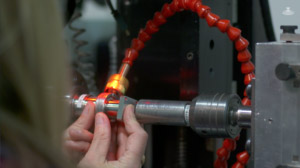Welding tolerances come in many forms, and there’s one factor in particular that can wreak havoc on a qualified process.
Thickness refers to tolerance of the cross section of the material at the point of welding. Depending on the weld joint configuration (assume autogenous for today), there may be two or more tolerances to consider.
- The penetration tolerance – how deep the weld is and the +/- allowance. This will play a critical role in the strength, repeatability and achievability of the weld.
- First component thickness tolerance – With a full penetration weld, if your tolerance band here is wider than your process can readily accommodate, you can have over- or under-penetration with a whole host of problems – as always, a topic for a future post.
- Second component thickness tolerance – if there is sufficient thickness tolerance on both first and second members, this can lead to significant mismatch between the components, again leading to a host of potential issues.
- Additional components – weld backups, nearby features, etc. We spoke about compensating for weld shrinkage in an earlier blog post. If that isn’t taken into consideration, you risk all sorts of undesirable weld issues.
Now, if we’re looking at a partial penetration weld, we may not be as concerned about the overall thickness as a tolerance. We will be much more interested in the mismatch between the components.
As always, please remember to consult with a welding expert every time you’re designing a component for welding. It will reduce your stress in the design process and all subsequent operations.
